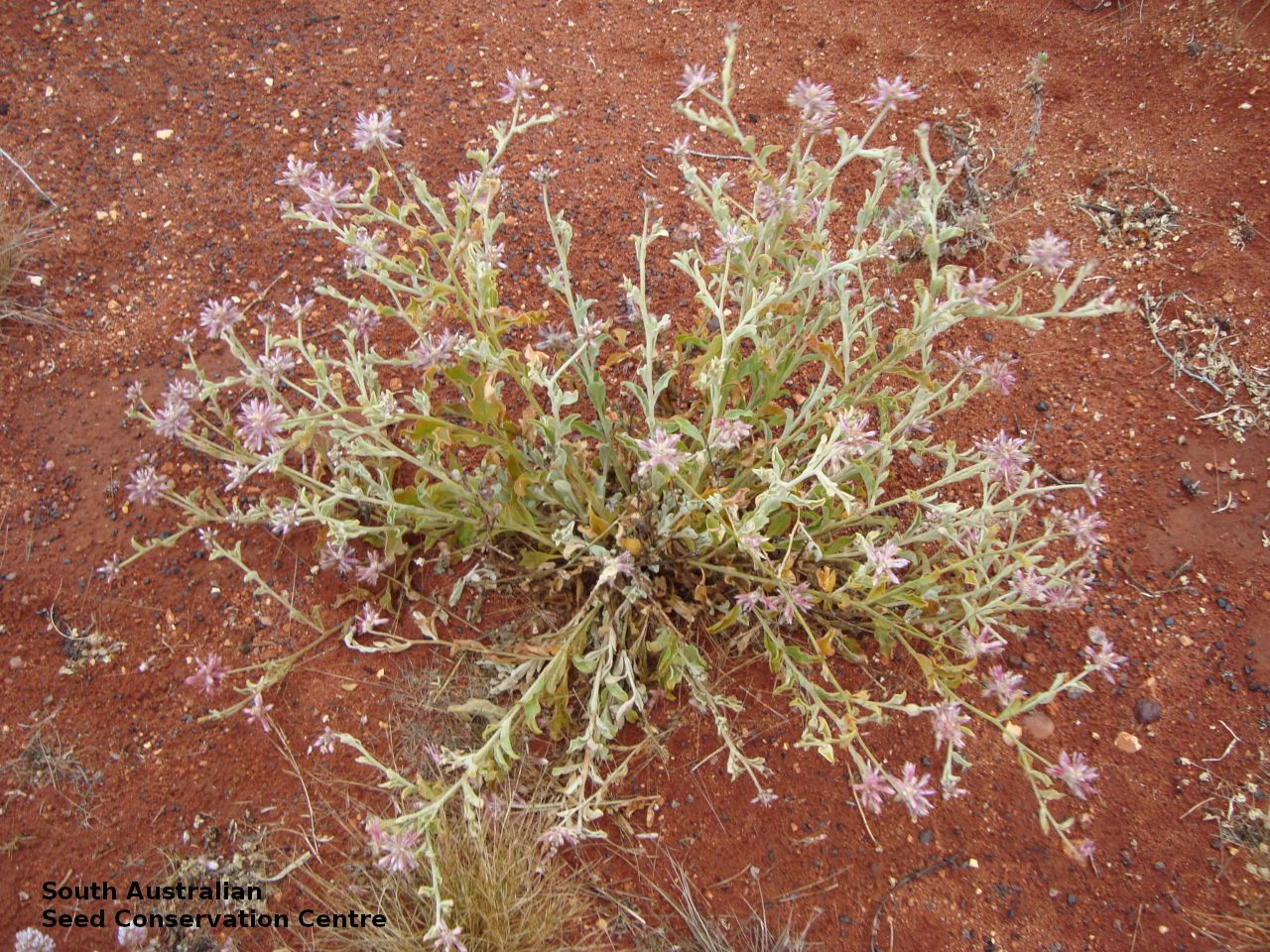
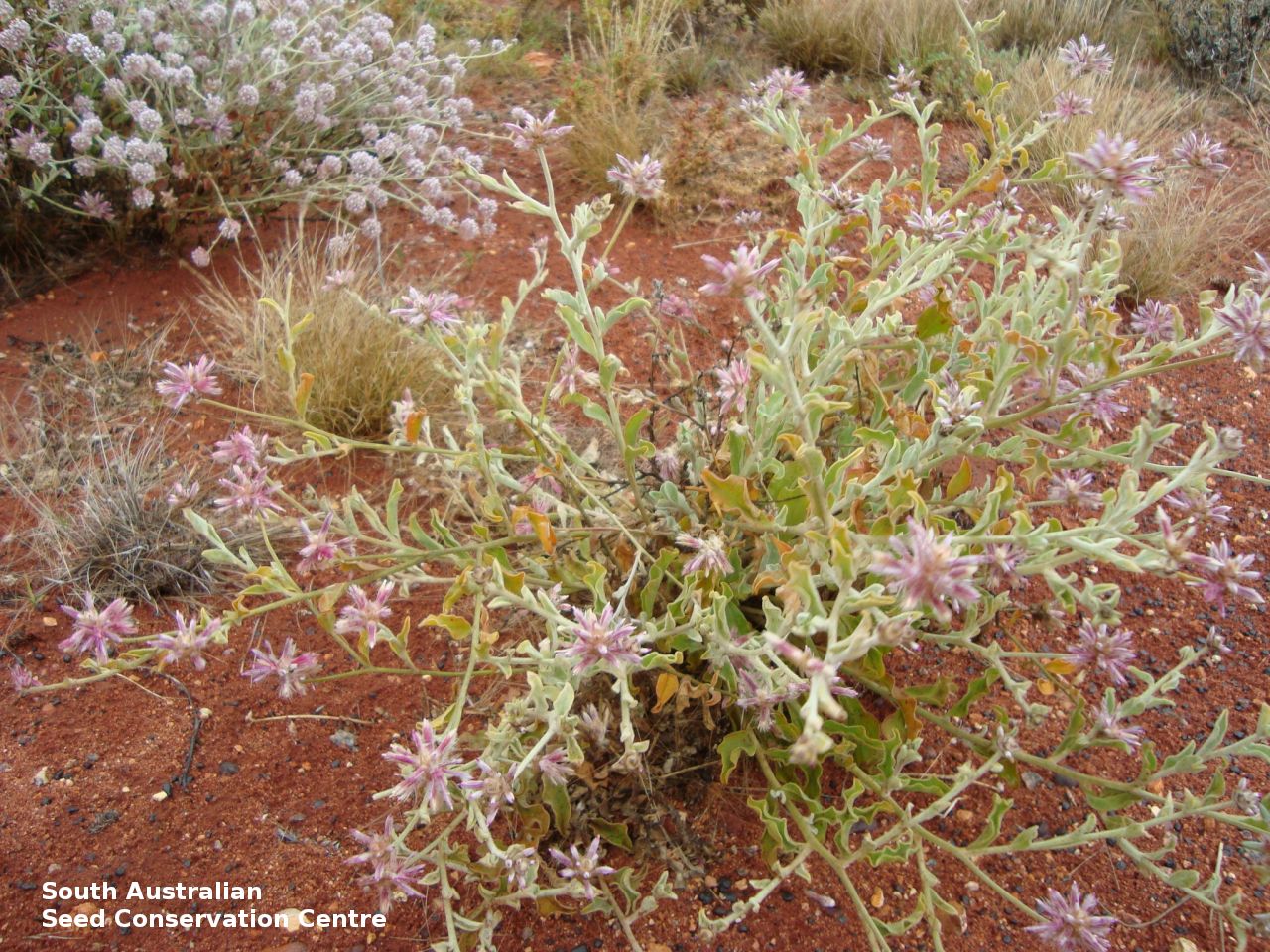
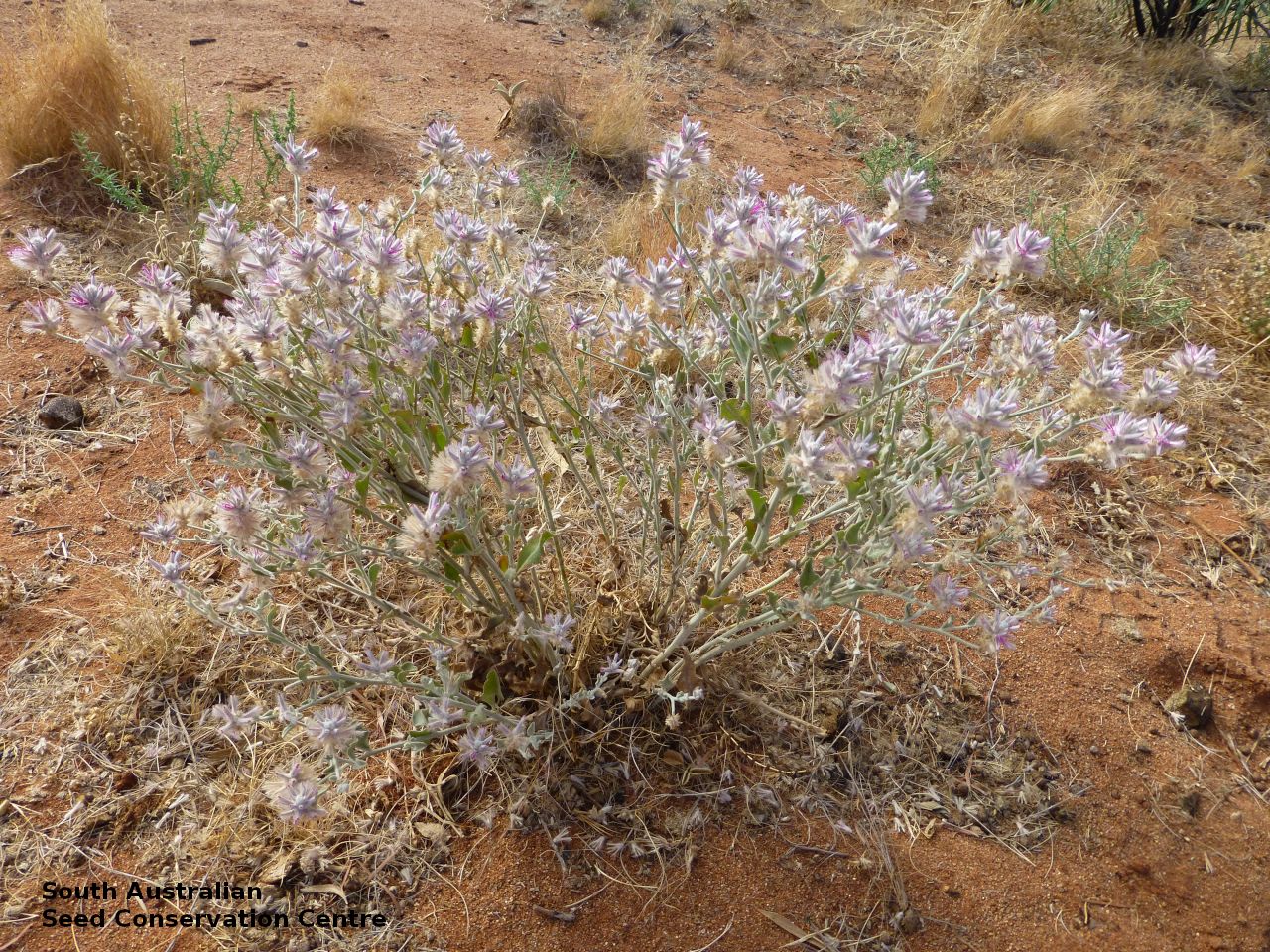
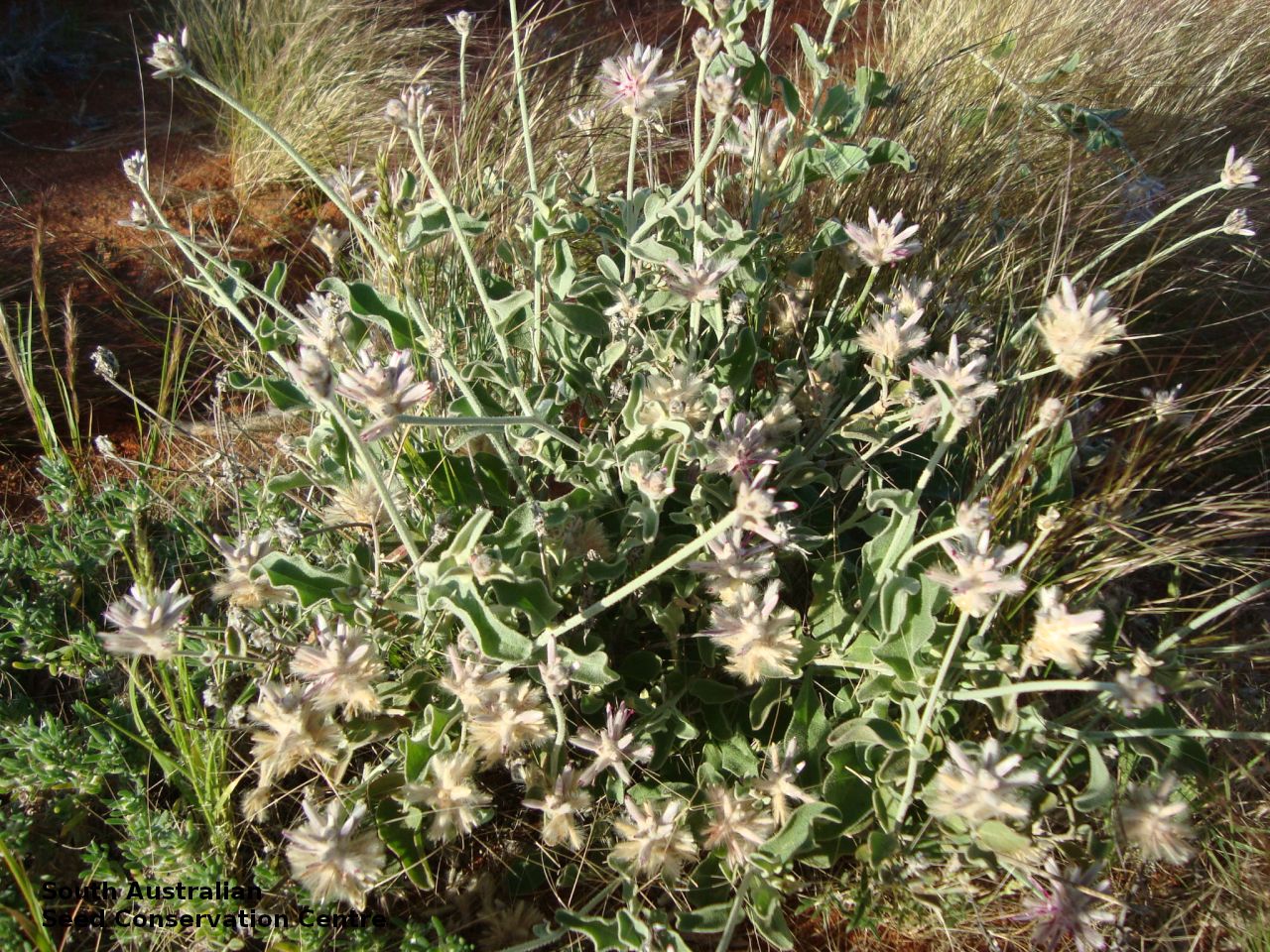
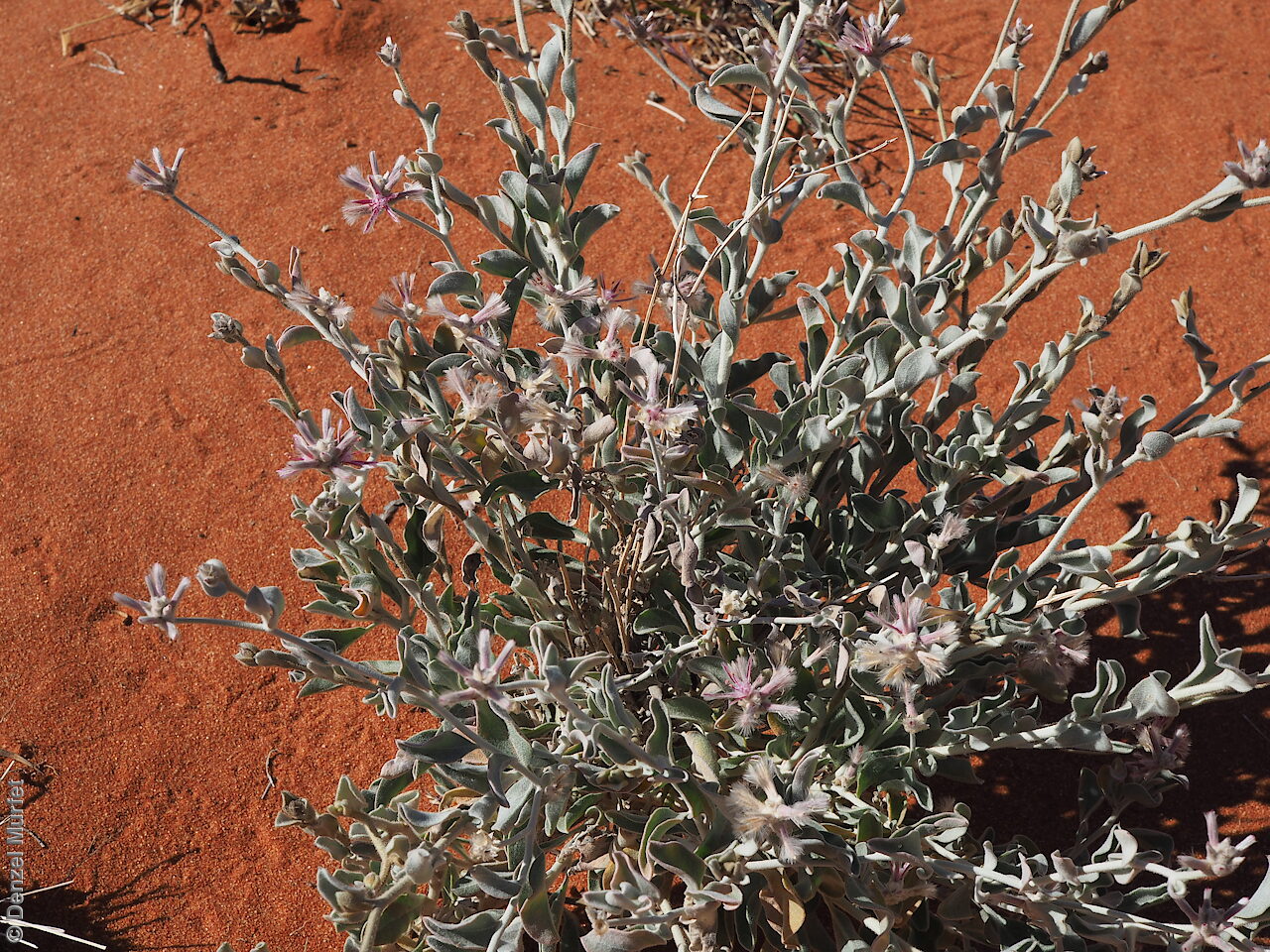
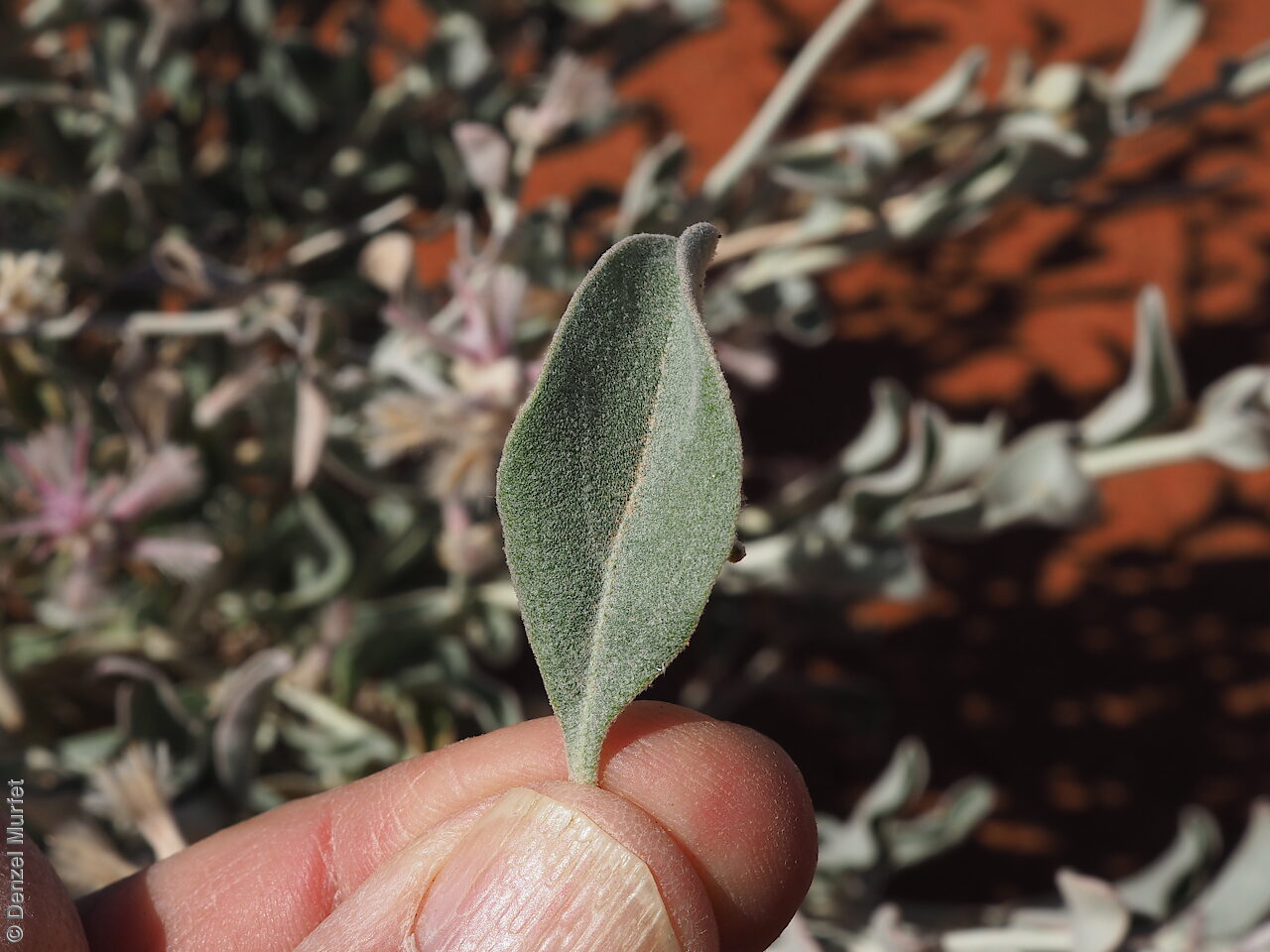
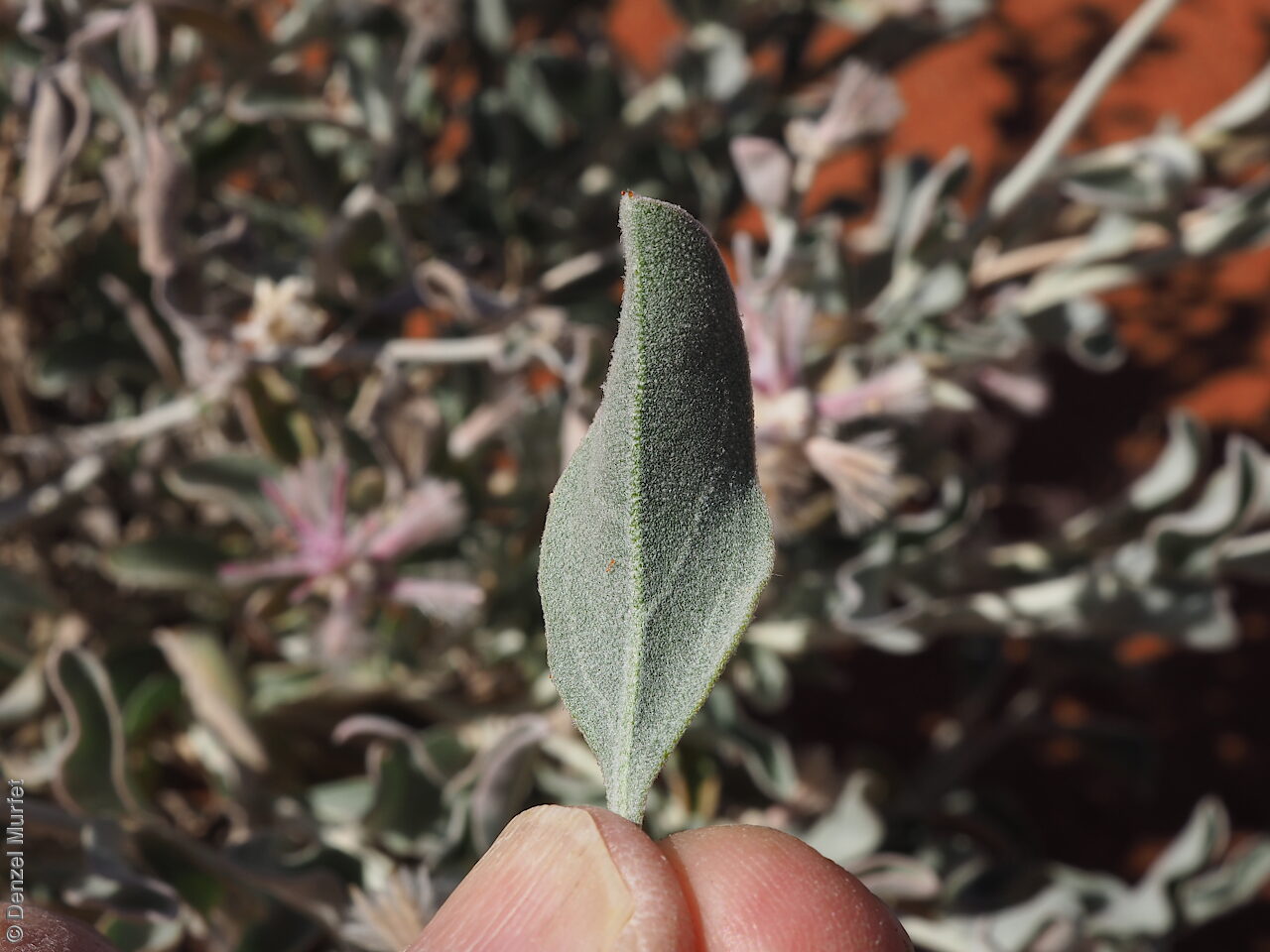
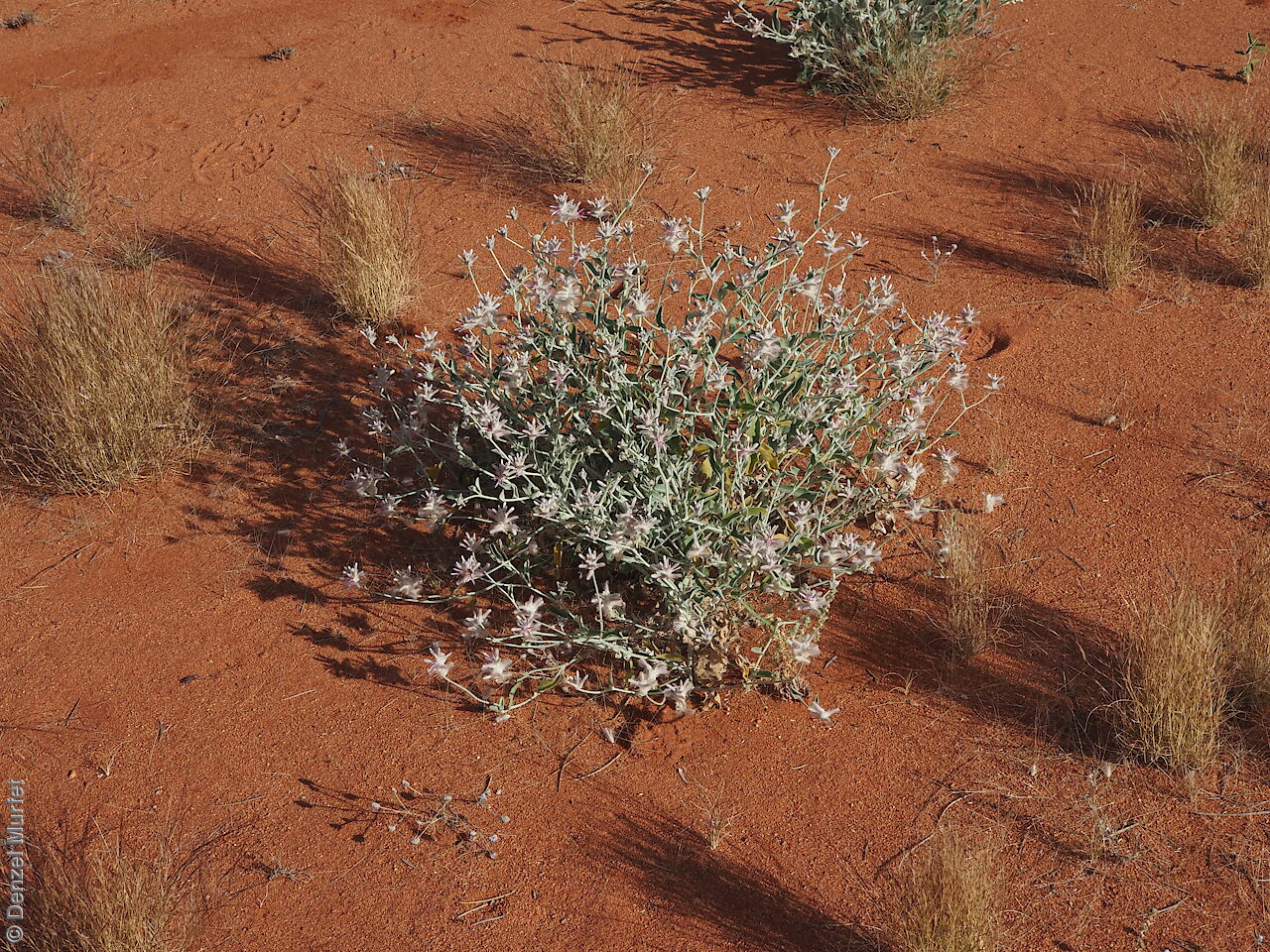
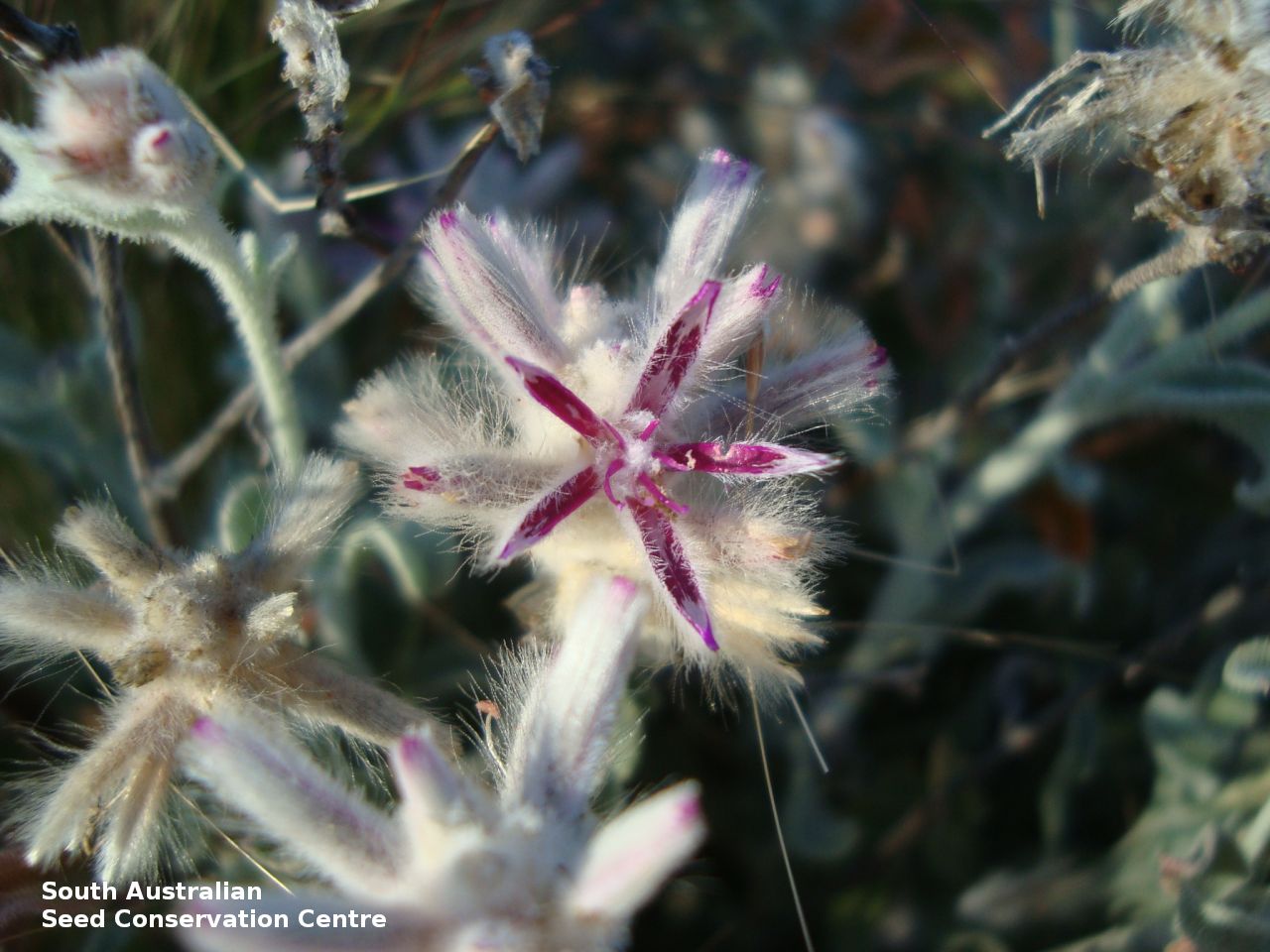
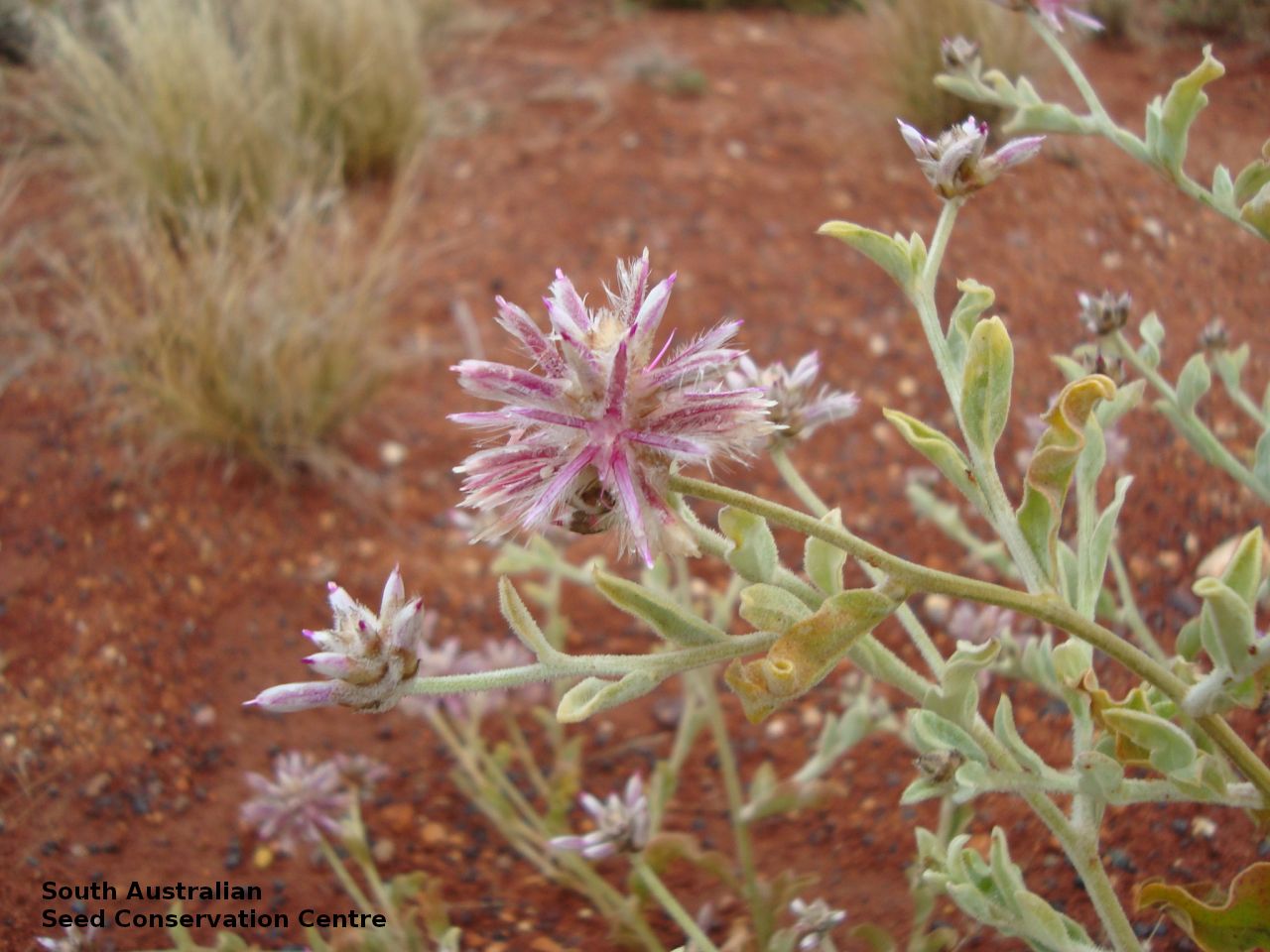
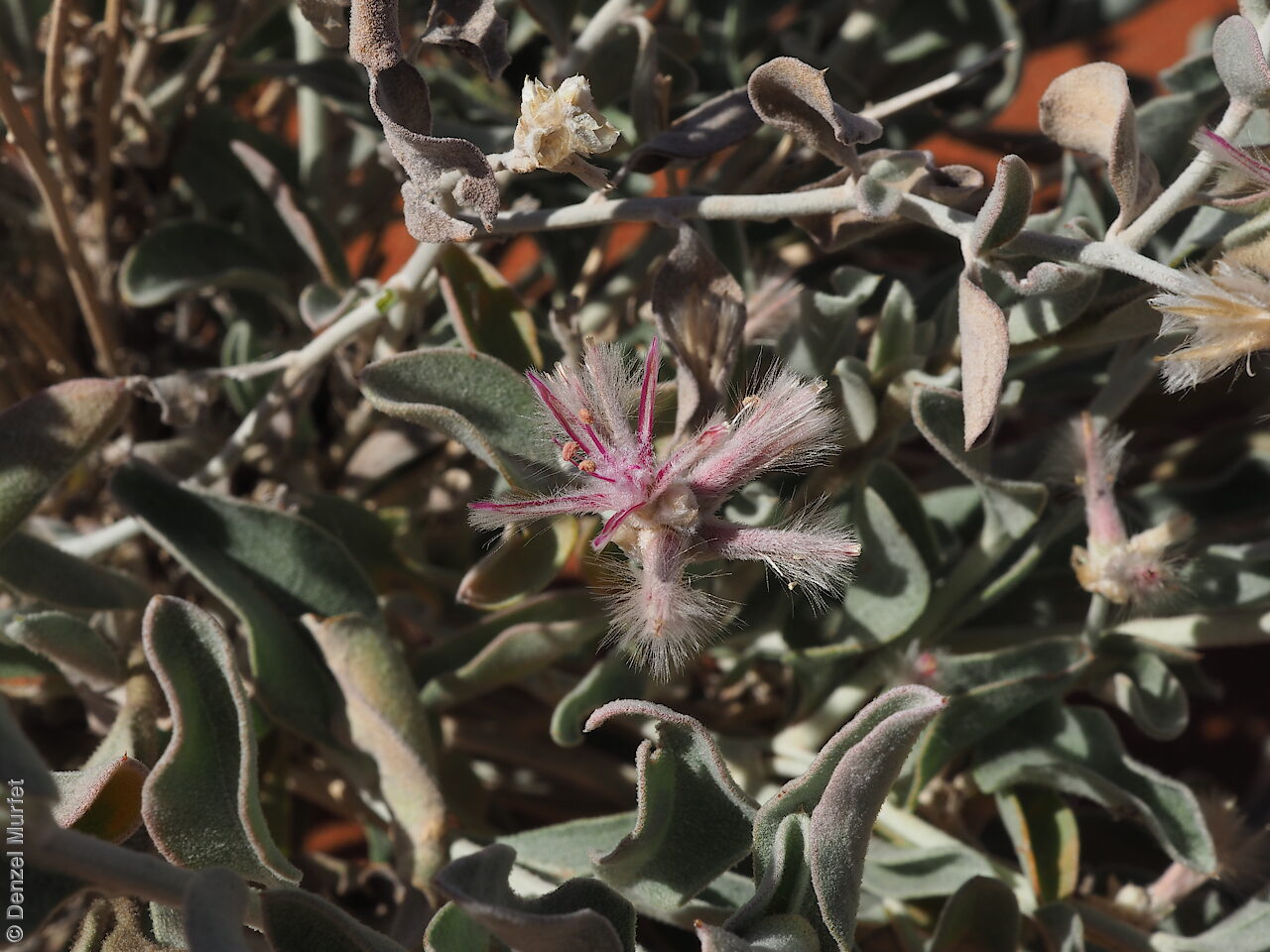
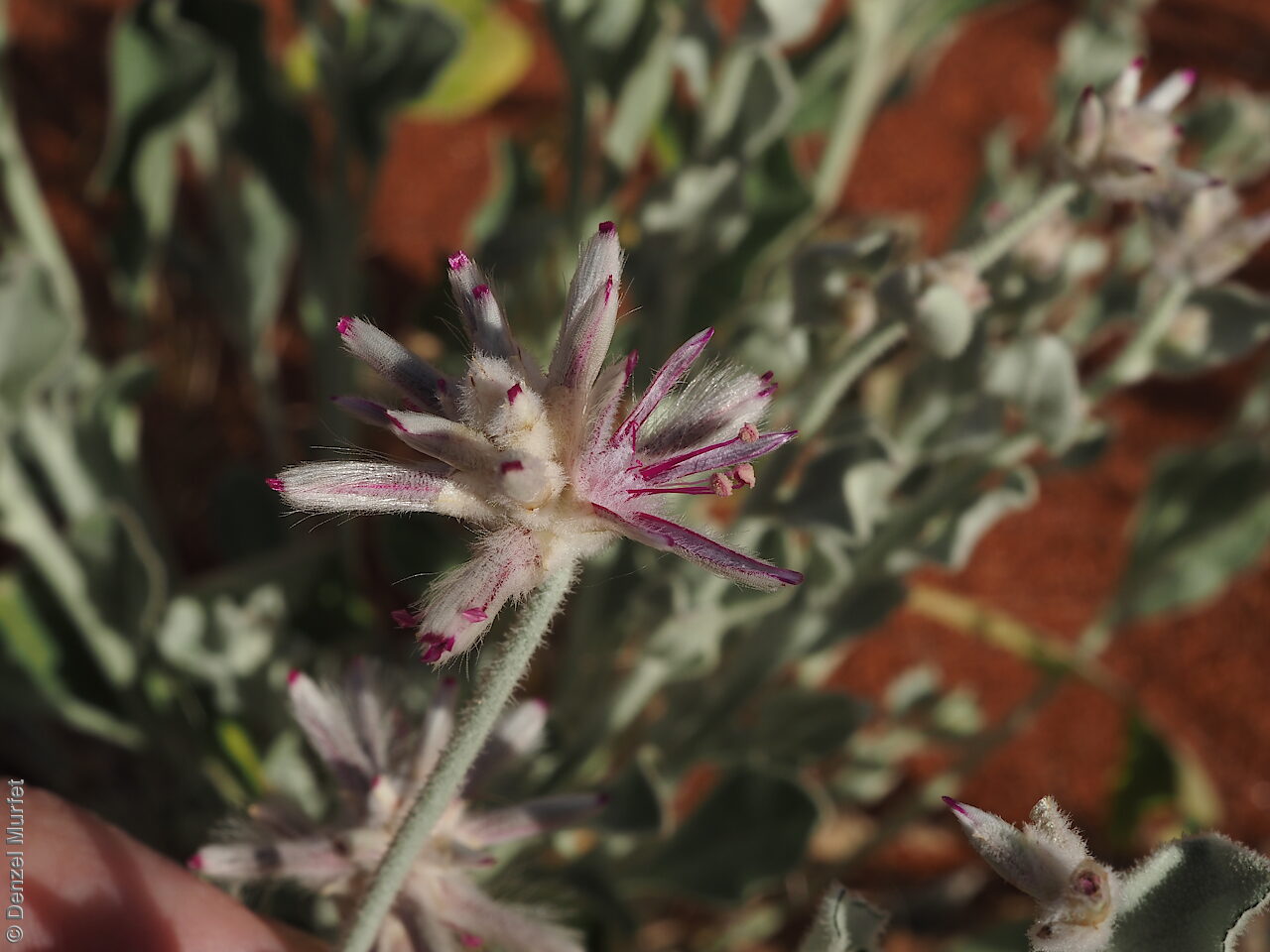
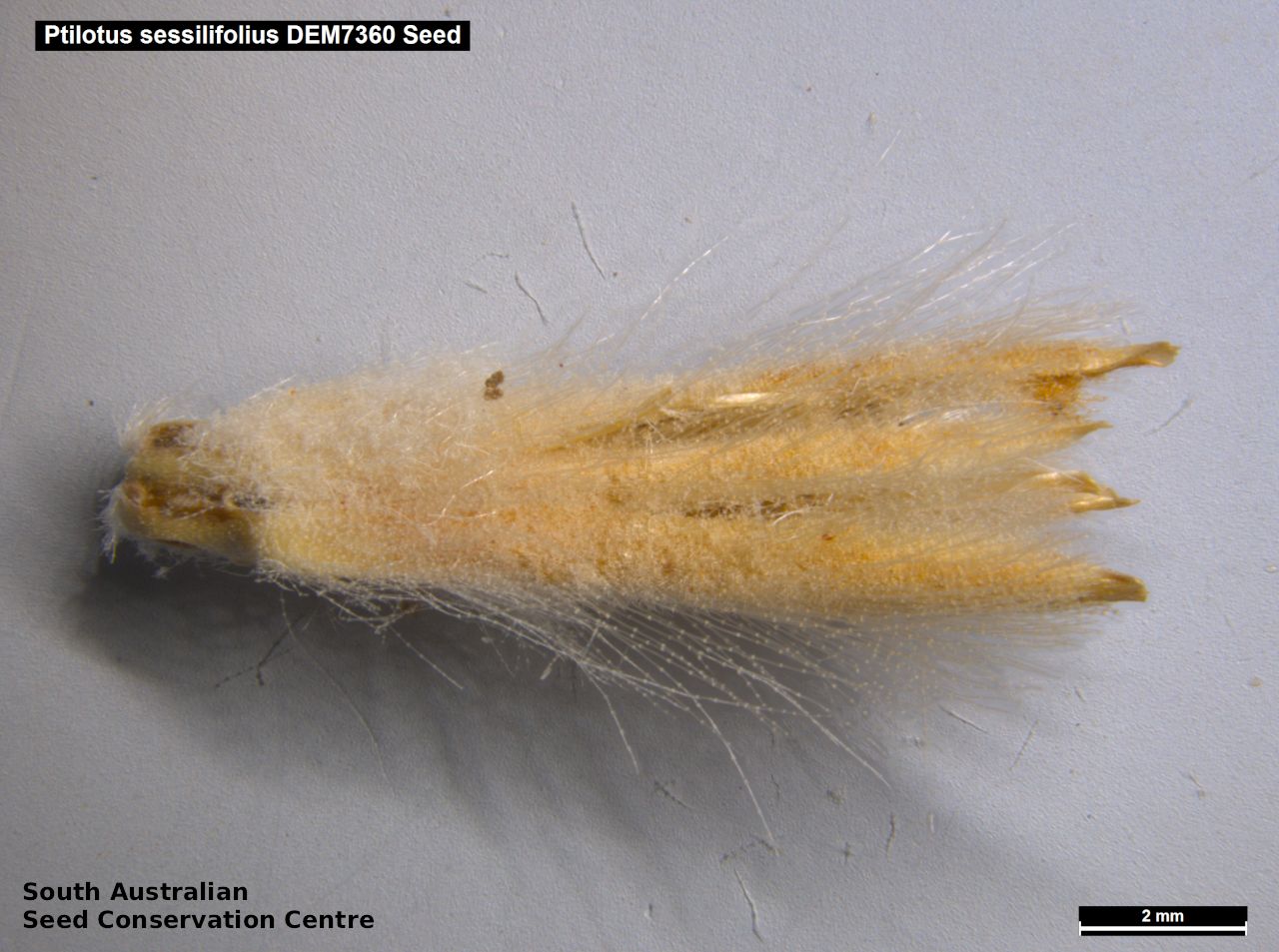
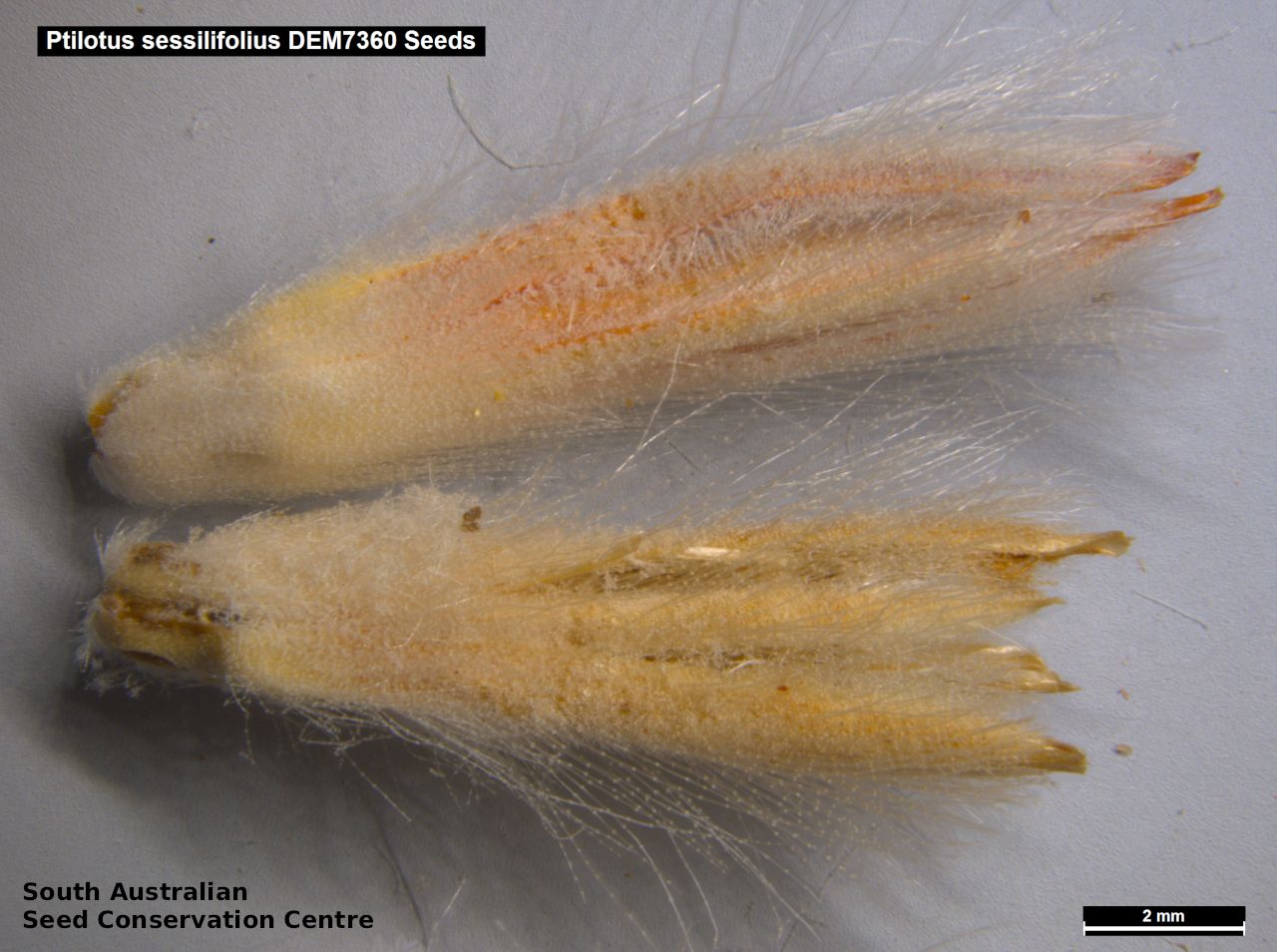
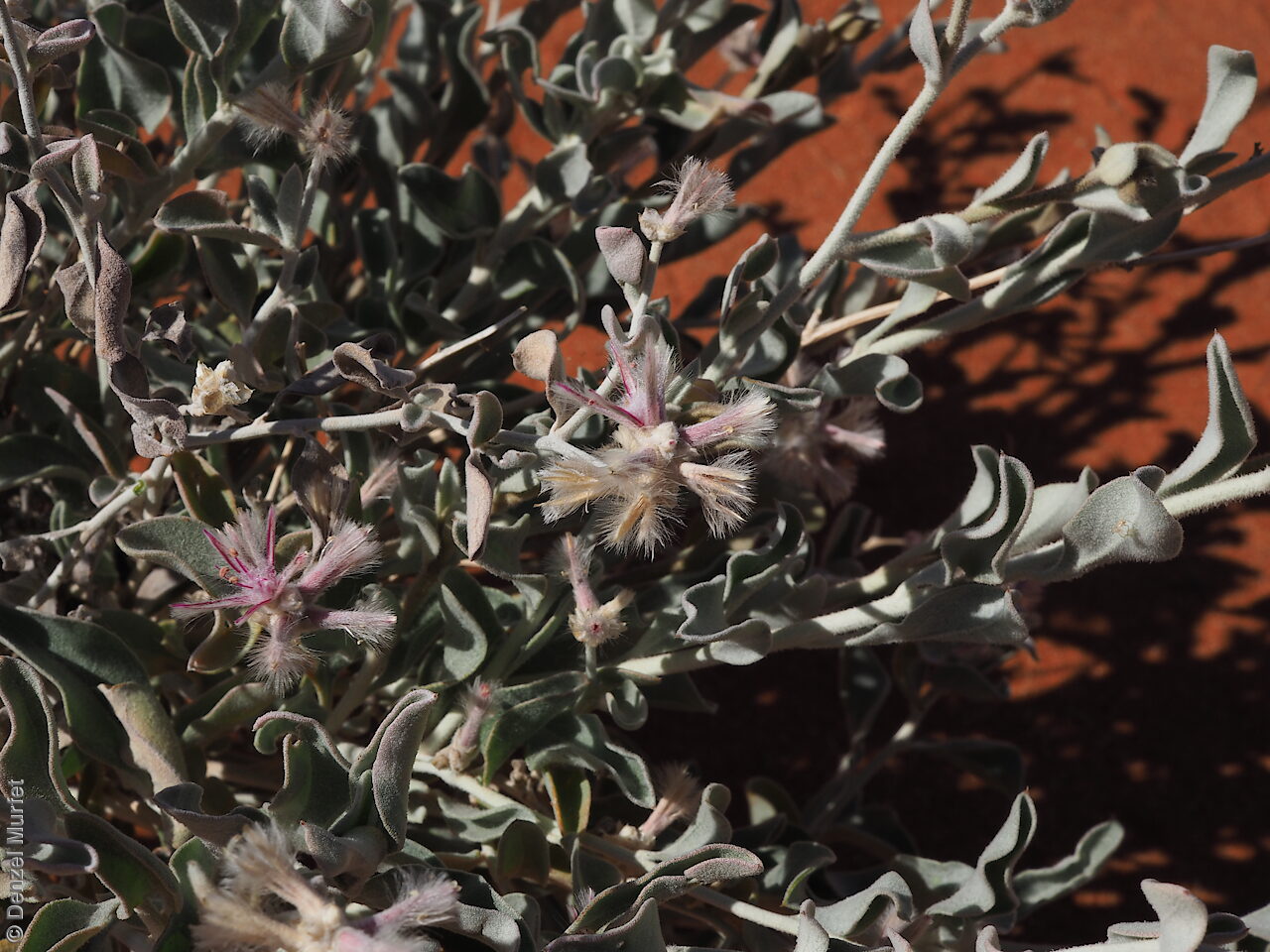
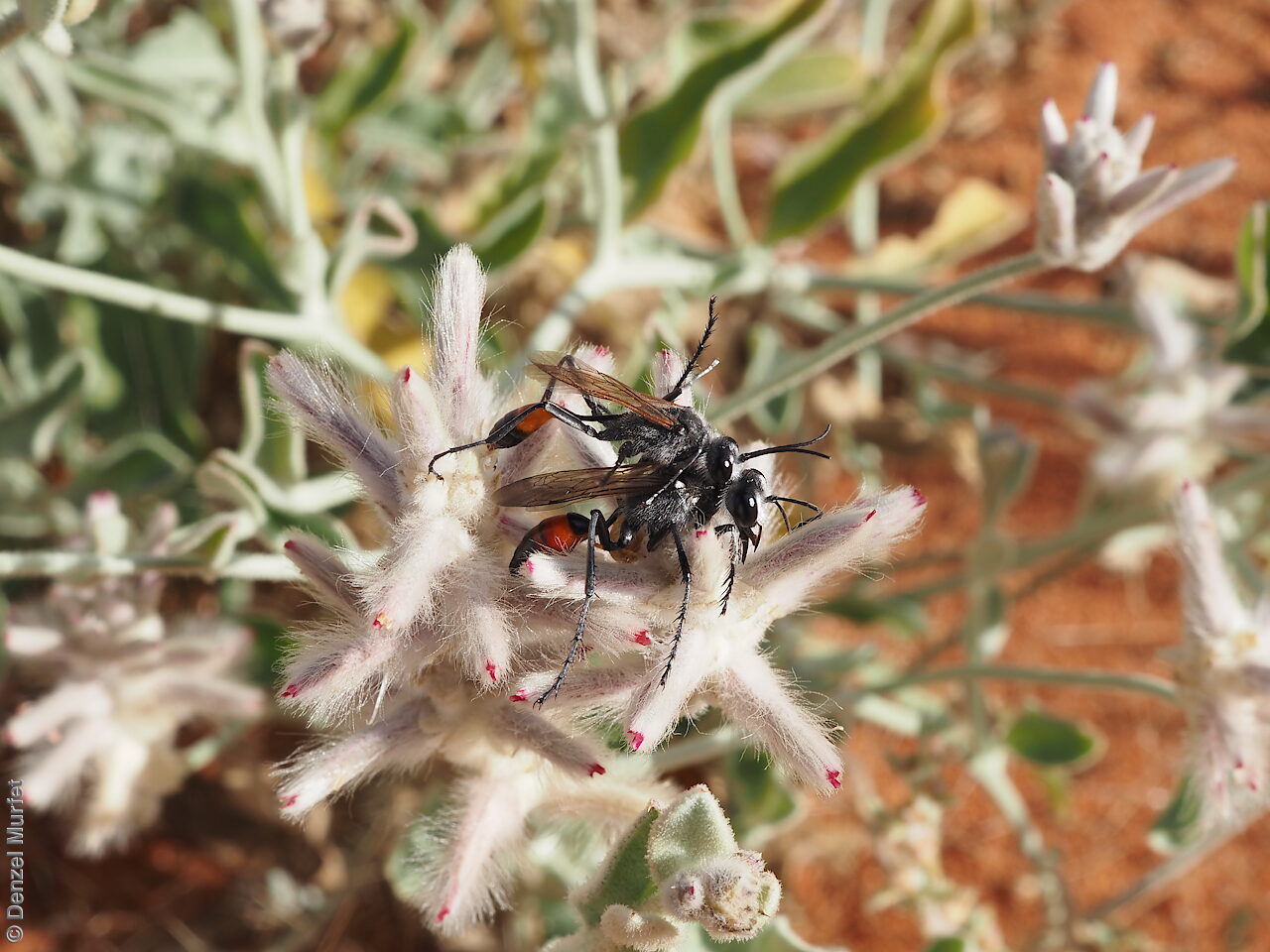
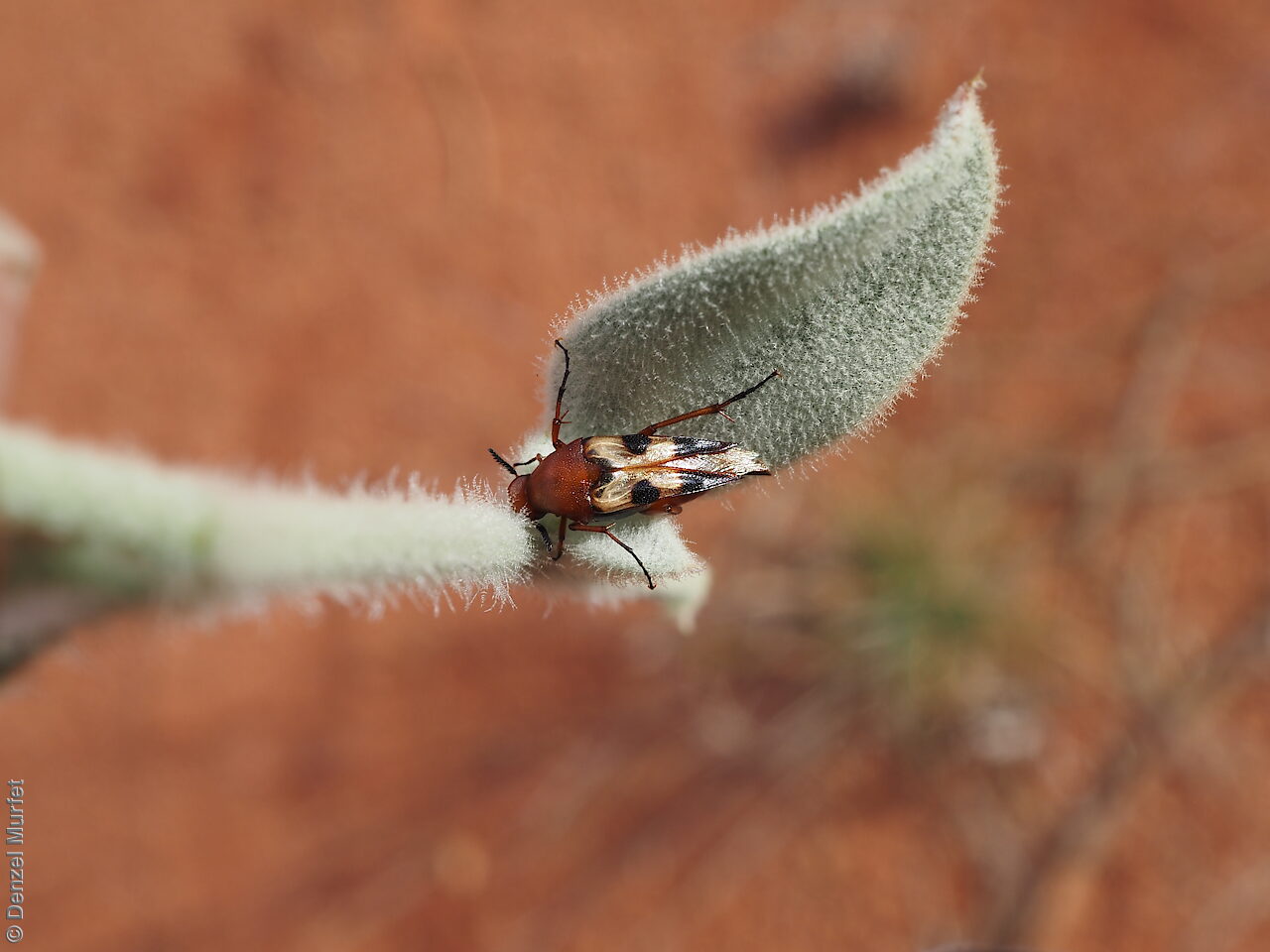
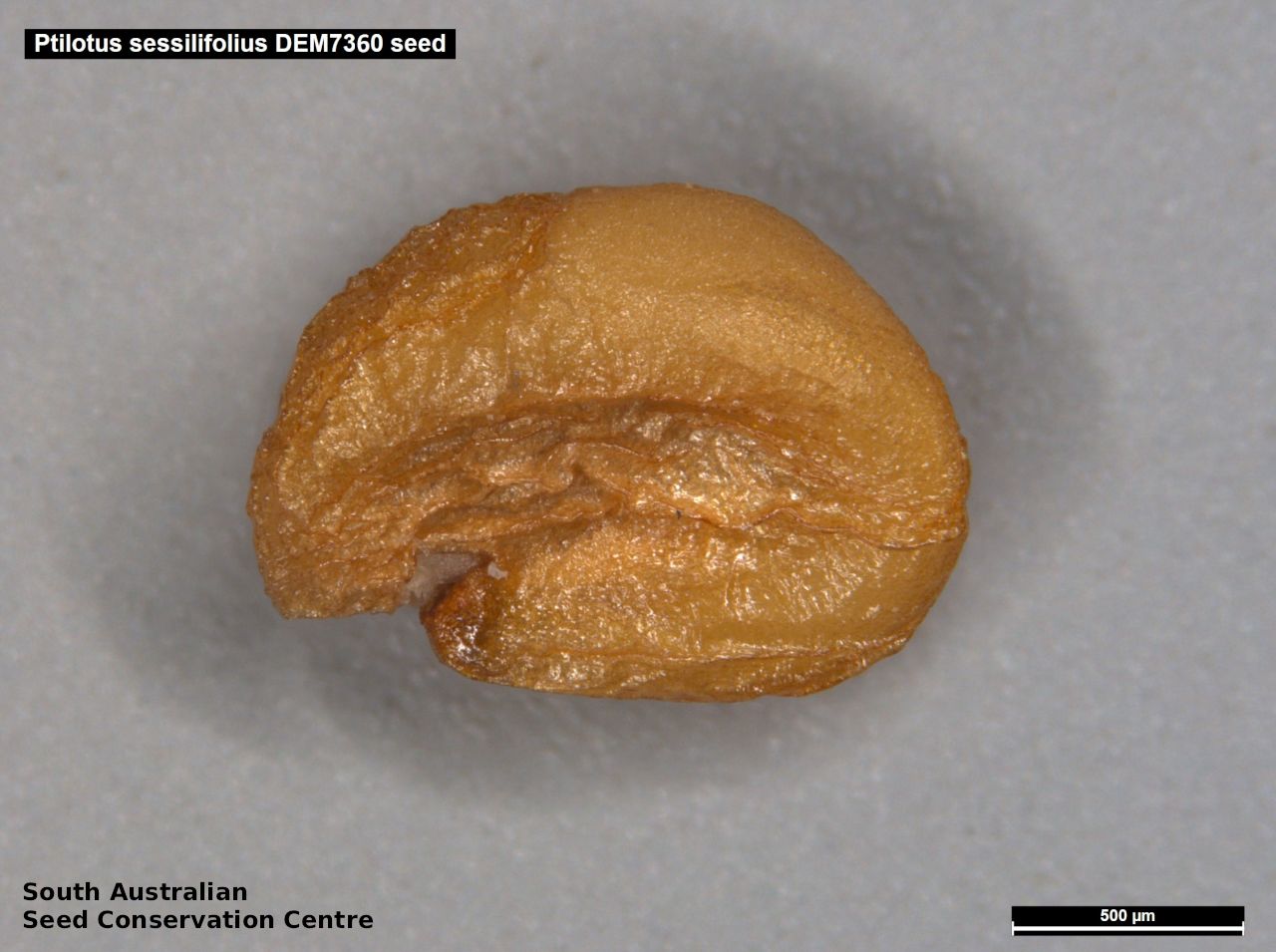
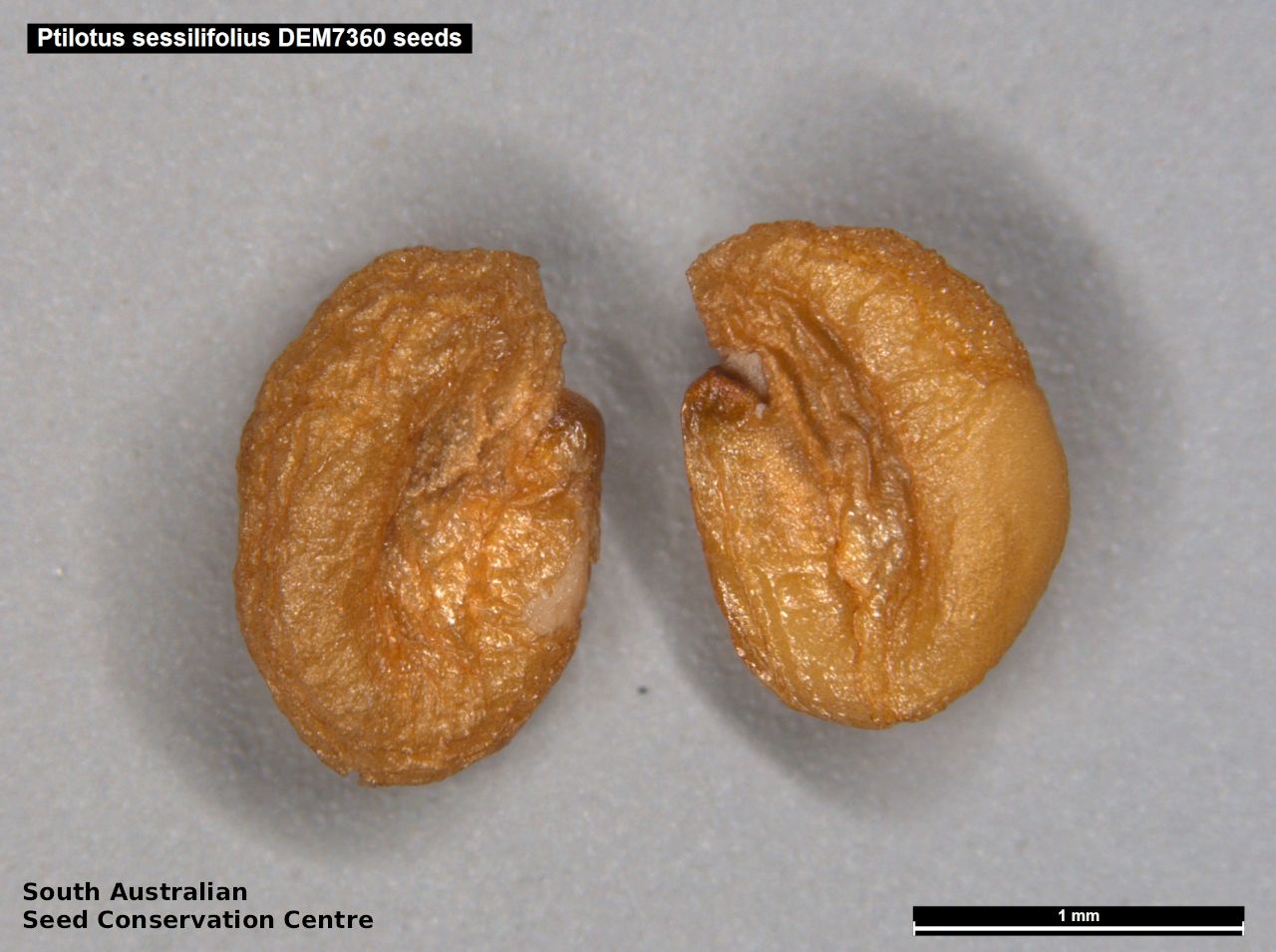
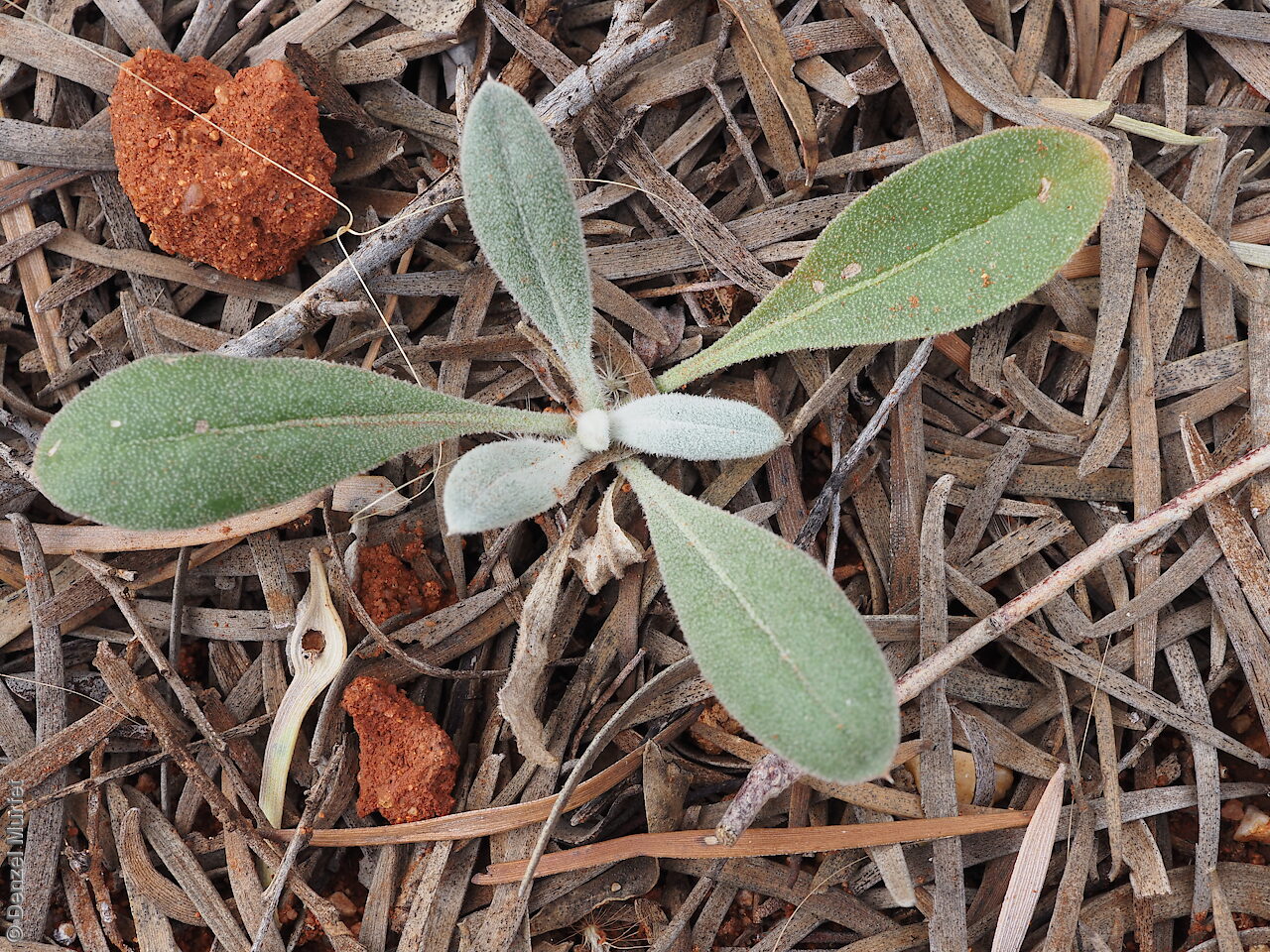
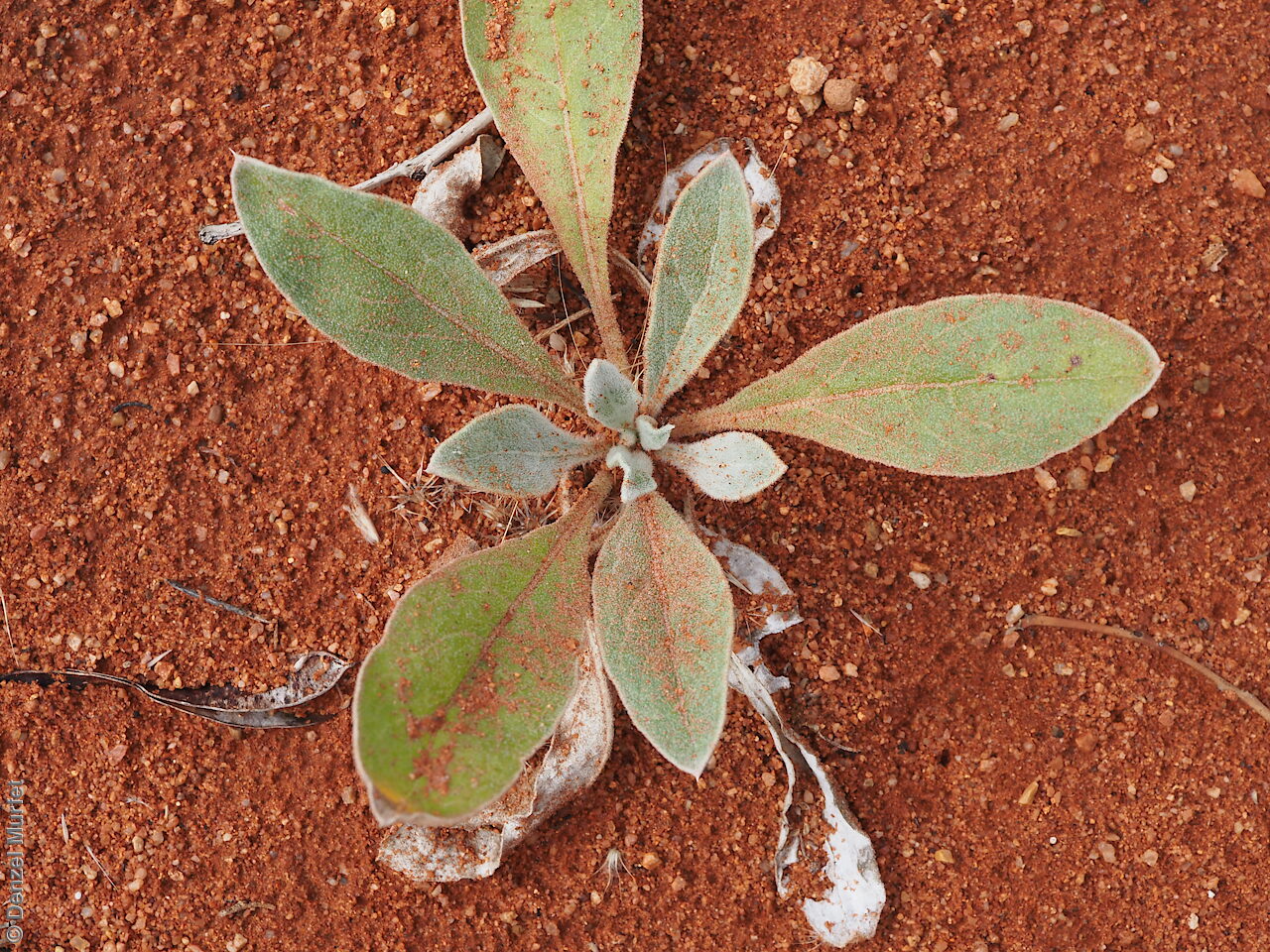
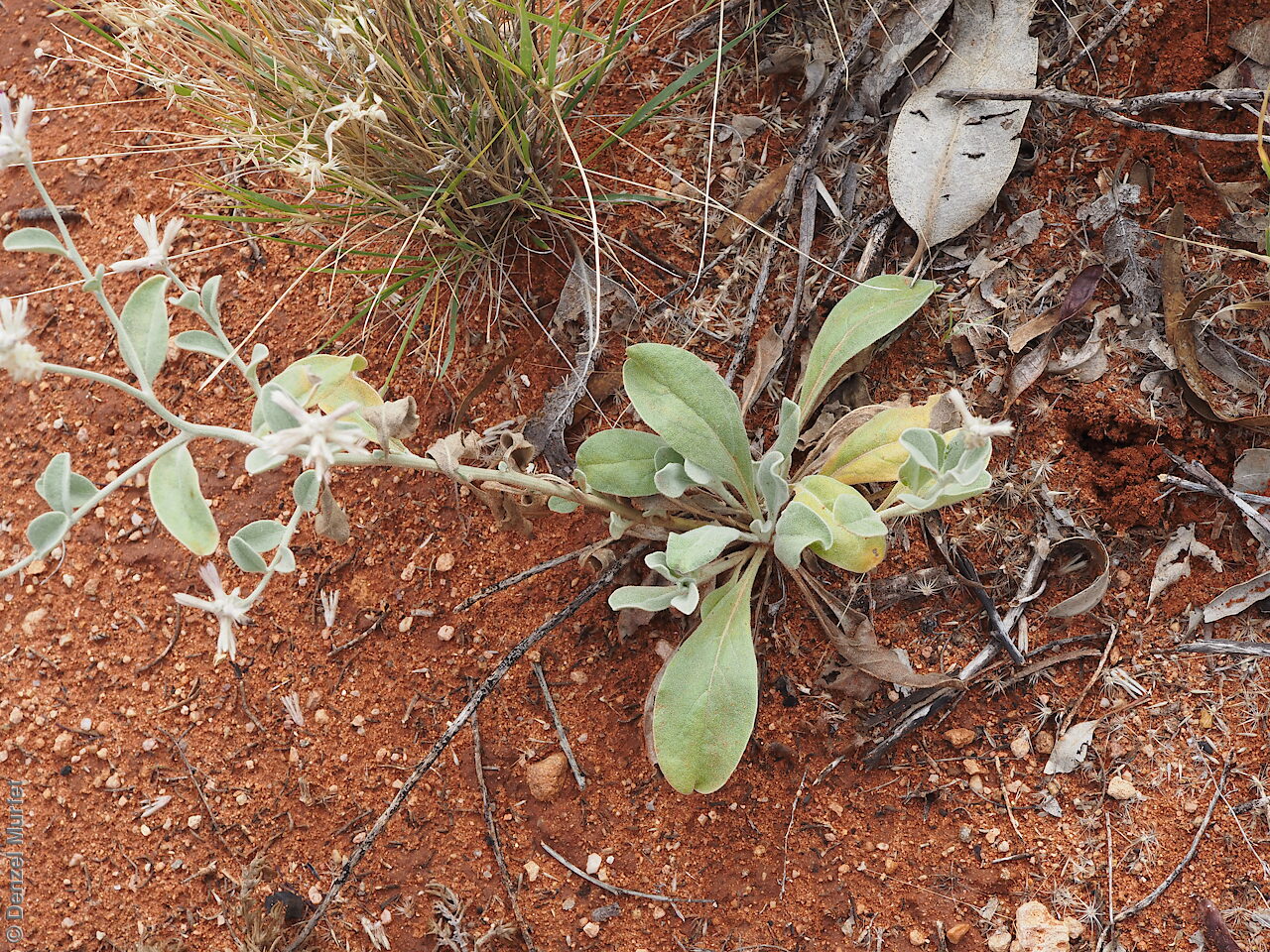

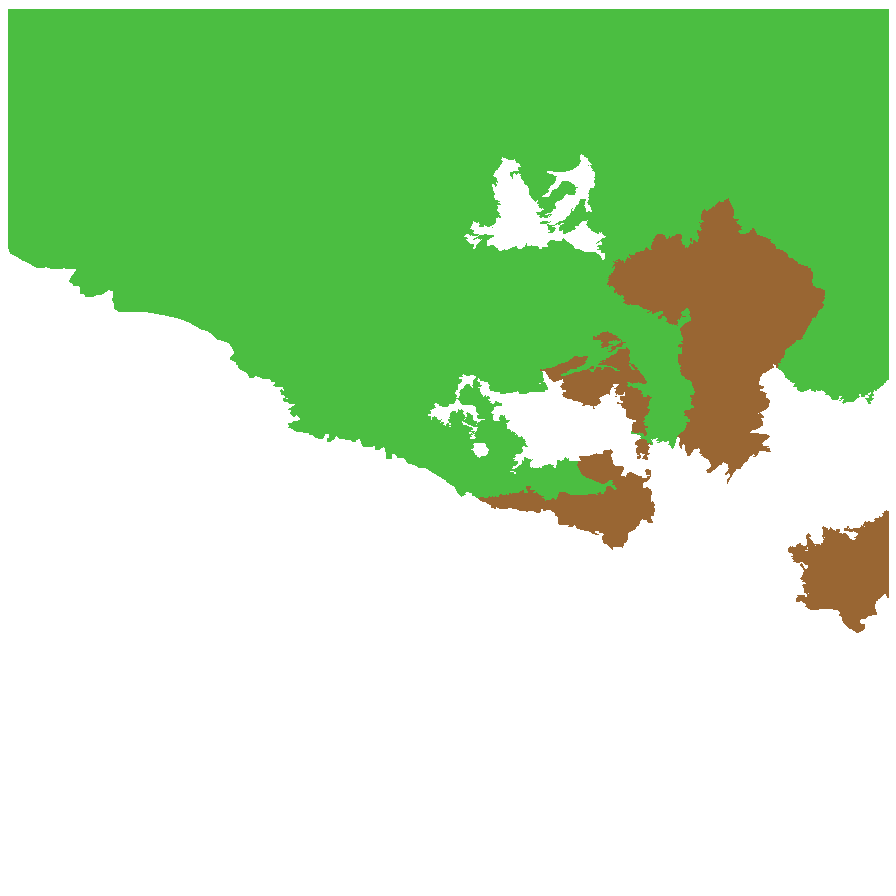
Prior names
Trichinum incanum var. grandiflorum
Ptilotus sessilifolius var. sessilifolius
Trichinium sessilifolium
Trichinium obovatum var. grandiflorum
Trichinium atriplicifolium
Ptilotus oblongifolius
Trichinium incanum var. intermedium
Ptilotus obovatus var. grandiflorus
Trichinium obovatum var. atriplicifolium
Ptilotus atriplicifolius
Common names
Crimson Fox-tail
Crimson-tails
Etymology
Ptilotus from the Greek 'ptilotos' meaning feathered or winged; referring to the hairy flowers. Sessilifolius from Latin meaning unstalked leaves.
Distribution and status
Found in the northern part of South Australia, growing in a variety of habitats, including sand dunes, and gravelly rises with clay-loam. Also found in all mainland states. Native. Common in South Australia. Common in the other states.
Herbarium regions: North Western, Lake Eyre, Nullarbor, Gairdner-Torrens, Flinders Ranges, Eastern, Eyre Peninsula, Northern Lofty, Murray
AVH map: SA distribution map (external link)
Plant description
Erect, rounded shrubby perennial to 1 m high with densely hairy stems, hairs persisting with age. Leaves obovate or elliptic, to 75 mm long and 30 mm wide. Flower-spike terminal, globular to ovoid with 20 purple, pink or mauve flowers, outer surface hirsute, inner woolly at base, pubescent above. Flowering between June and October. Fruits are globular to ovoid head containing a number of long papery and hairy fruits, each containing one seed Seed embryo type is peripheral.
Seed collection and propagation
Collect seeds between October and December. Be very careful when collecting this species as the fruits contain fine hairs that may cause an allergic reaction for some people. Collect the fruit heads when dried to a pale straw colour. Each fruit should come off the head easily when fingers are rubbed up the stem. Collect more fruits than required as not all fruits will have a viable seed. Be very careful when cleaning this species as the fruits contain fine hairs that may cause an allergic reaction for some people. To clean, rub the fruit heads gently to dislodge the seed at the base of each fruit. Use a sieve to separate the unwanted material. Store the seeds with a desiccant such as dried silica beads or dry rice, in an air tight container in a cool and dry place. Seeds are non-dormant, viable seed should germinate readily.